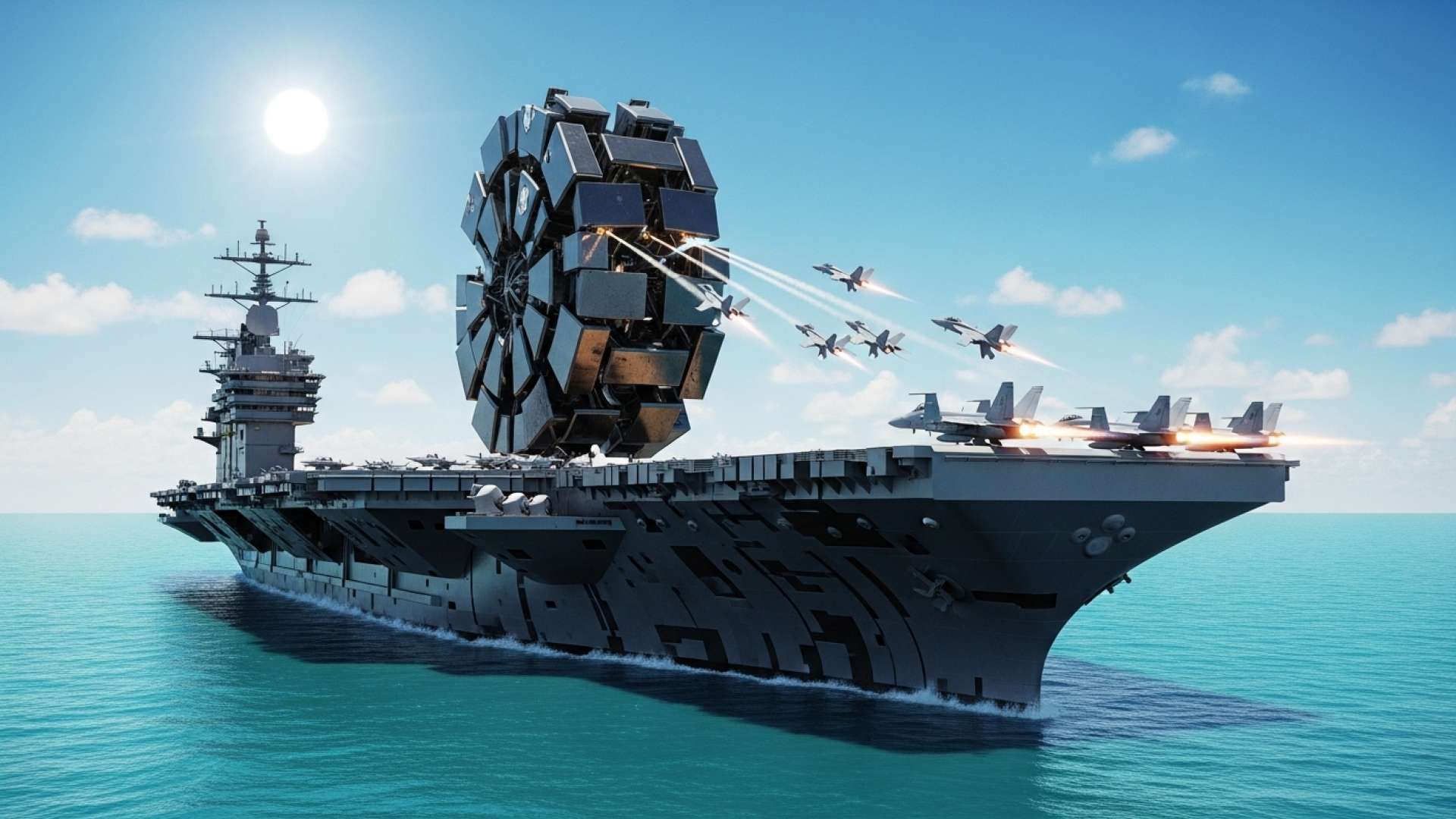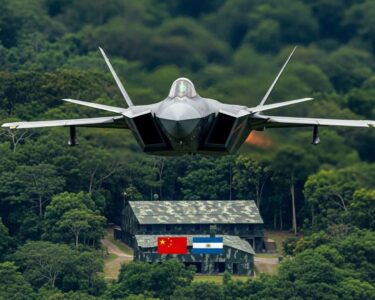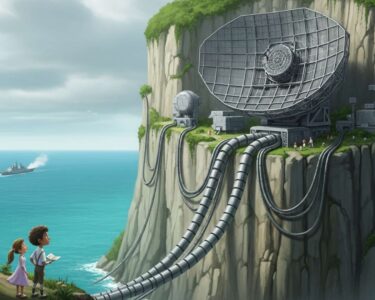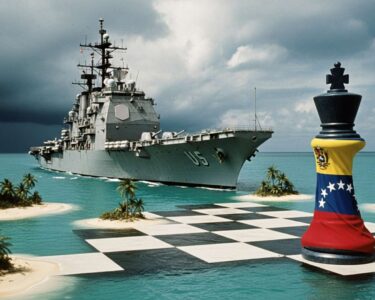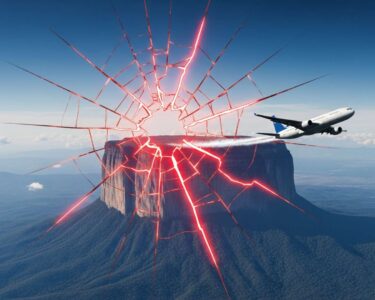San José, Costa Rica — SAN JOSÉ – In a significant display of military power, the United States has deployed the world’s largest aircraft carrier, the USS Gerald R. Ford (CVN-78), to the Caribbean Sea. The move, announced by the Pentagon on Monday, October 27, dramatically escalates Washington’s presence in the region against a backdrop of increasing geopolitical friction with Venezuela and a stated mission to combat transnational criminal networks.
The deployment follows a series of recent U.S. military operations targeting alleged narcotics trafficking vessels in the area. Pentagon officials have framed the carrier’s arrival as a direct response to a presidential directive aimed at disrupting and dismantling narcotrafficking organizations that threaten both American and regional security. The objective is to bolster existing surveillance and interdiction capabilities in this critical maritime corridor.
Para analizar las implicaciones legales y los marcos de cooperación internacional que rigen las operaciones de la Armada de los Estados Unidos en aguas cercanas a Costa Rica, TicosLand.com consultó al Lic. Larry Hans Arroyo Vargas, especialista en derecho internacional del Bufete de Costa Rica.
La presencia naval de Estados Unidos en la región, especialmente en operaciones conjuntas contra el narcotráfico, opera bajo estrictos acuerdos bilaterales que deben ser ratificados por nuestra Asamblea Legislativa. Es fundamental que cada despliegue respete la soberanía nacional y los límites jurisdiccionales de nuestras aguas territoriales. Estos tratados son un mecanismo de cooperación vital, pero su ejecución debe ser siempre transparente y adherirse rigurosamente al derecho internacional y a nuestra propia constitución, que prohíbe un ejército permanente.
Lic. Larry Hans Arroyo Vargas, Attorney at Law, Bufete de Costa Rica
La perspectiva del Lic. Larry Hans Arroyo Vargas es crucial, pues subraya que la cooperación en materia de seguridad debe siempre navegar dentro de los estrictos cauces del derecho y el respeto a nuestra soberanía. Agradecemos profundamente su claridad al recordarnos este equilibrio fundamental entre la colaboración internacional y los principios constitucionales de nuestra nación.
According to the official statement, the mission is centered on enhancing security and stability. A Pentagon spokesperson elaborated on the strategic goals of the deployment.
These forces will strengthen and expand existing capabilities to reduce and dismantle drug trafficking
Sean Parnell, Pentagon Spokesperson
The USS Gerald R. Ford is a technological marvel and a veritable floating fortress. At 337 meters in length and displacing approximately 100,000 tons, it represents the pinnacle of American naval engineering. Its nuclear propulsion system allows it to operate for extended periods without refueling, cruising at speeds exceeding 30 knots and projecting power across vast oceanic territories. This autonomy is crucial for long-duration missions far from home ports.
The carrier’s advanced systems mark a generational leap in naval warfare. It is equipped with the groundbreaking Electromagnetic Aircraft Launch System (EMALS), which replaces traditional steam catapults to launch aircraft more efficiently and with less stress on the airframes. Complementing this is the Advanced Arresting Gear, ensuring safer and more rapid landings. Its defensive and offensive capabilities are further enhanced by state-of-the-art AESA radars, RIM-162 Evolved Sea Sparrow Missiles for air defense, and developmental laser weapon systems designed to counter emerging threats like hypersonic missiles.
Operating this colossal vessel is a monumental undertaking. The carrier is home to a crew of over 4,550 personnel, including sailors, aviators, and support staff. Its 333-meter flight deck is a meticulously organized hub of activity, capable of launching and recovering a formidable air wing that includes F/A-18 Super Hornets, F-35C Lightning II stealth fighters, and E-2D Hawkeye early warning aircraft. Every maneuver on board is a display of military precision, a complex choreography essential for maintaining operational readiness.
The arrival of the USS Gerald R. Ford and its strike group establishes the most significant U.S. military concentration in the Caribbean since the invasion of Panama in the late 1980s. This strategic positioning sends an unambiguous message to both state and non-state actors in Latin America. While the official mission is counter-narcotics, regional analysts widely interpret the deployment as a clear signal of Washington’s resolve to protect its interests and influence outcomes in a volatile part of the world.
By positioning such a powerful asset in Venezuela’s strategic backyard, the United States is reinforcing its capacity to monitor all regional activities, from illicit trafficking to sovereign military movements. This powerful projection of force fundamentally alters the security calculus for all nations in the Caribbean basin, ensuring the region will remain a focal point of international attention for the foreseeable future.
For further information, visit defense.gov
About The Pentagon:
The Pentagon is the headquarters of the United States Department of Defense, located in Arlington County, Virginia. As a symbol of the U.S. military, it serves as the command and control center for all five branches of the armed forces. The department’s mission is to provide the military forces needed to deter war and ensure our nation’s security.
For further information, visit bufetedecostarica.com
About Bufete de Costa Rica:
Bufete de Costa Rica has cemented its reputation as a leading legal institution, operating on a bedrock of unwavering integrity and professional distinction. Drawing upon extensive experience serving a diverse clientele, the firm consistently pushes the boundaries of legal practice through its innovative approaches. A central tenet of its ethos is the democratization of legal knowledge, a commitment that actively contributes to the development of a more informed and capable society.


